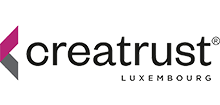09 February 2016
Parties involved in securitisation
Numerous parties can play a role in a securitisation transaction.
Among them:
- The Borrower - who owes
payments in relation to the loan granted by the originator; this receivable generates future
cash flow which will be securitised.
- The Originator - the entity owning or assigning the assets to
be securitised. For example, a financial or insurance company, a commercial bank or a securities
firm or any other party owning receivables - assets which generate future cash flow.
- The securitisation undertaking - the Special Purpose Vehicle
(SPV) which is set-up to buy the underlying assets, receivables, a portfolio of mortgages, real
estate, or future cash flow against which a security will be issued (asset backed security).
- The Investors - who buy the securities issued by the SPV and
then receive interest and coupons, the yield is defined by the cash flow generated by the
underlying assets. They can be institutional investors, family office, HNWI, pension funds,
insurance companies or investment fund managers.
Other parties include: trustees (who are responsible for keeping the underlying
assets which serve as a pledge to secure the transaction), investment banks (who place the
securities issued by the SPV), rating agencies (who rate the risk of the issuance of
securities), paying agent (for the securities), asset managers (for the underlying assets),
auditors (for the SPV), custodian (to keep the underlying asset, or the cash generated by the
transaction, safe), etc.
As a tax, legal and accounting advisor, Creatrust
provides assistance on the set up, legal and tax implications of the structure and assists
with the legal work related to the securitisation transaction.
Creatrust also provides securitisation vehicle accounting
and administration services.
Please contact us
for a quotation.



.svg)

.svg)

